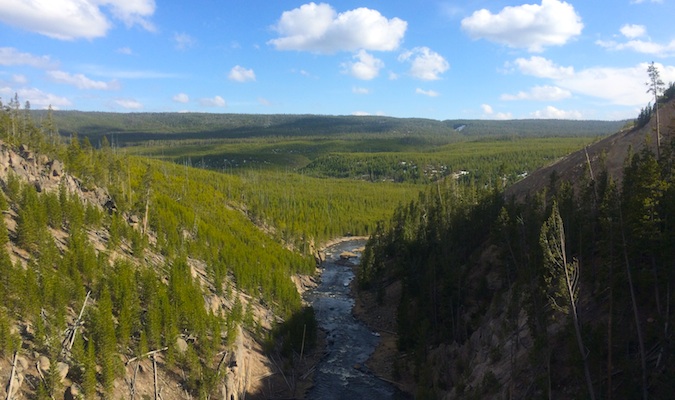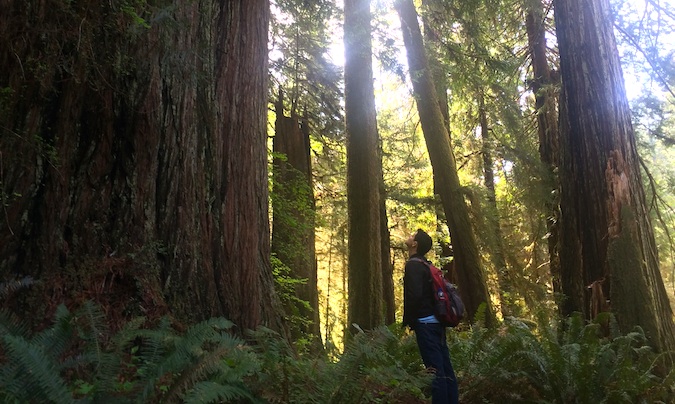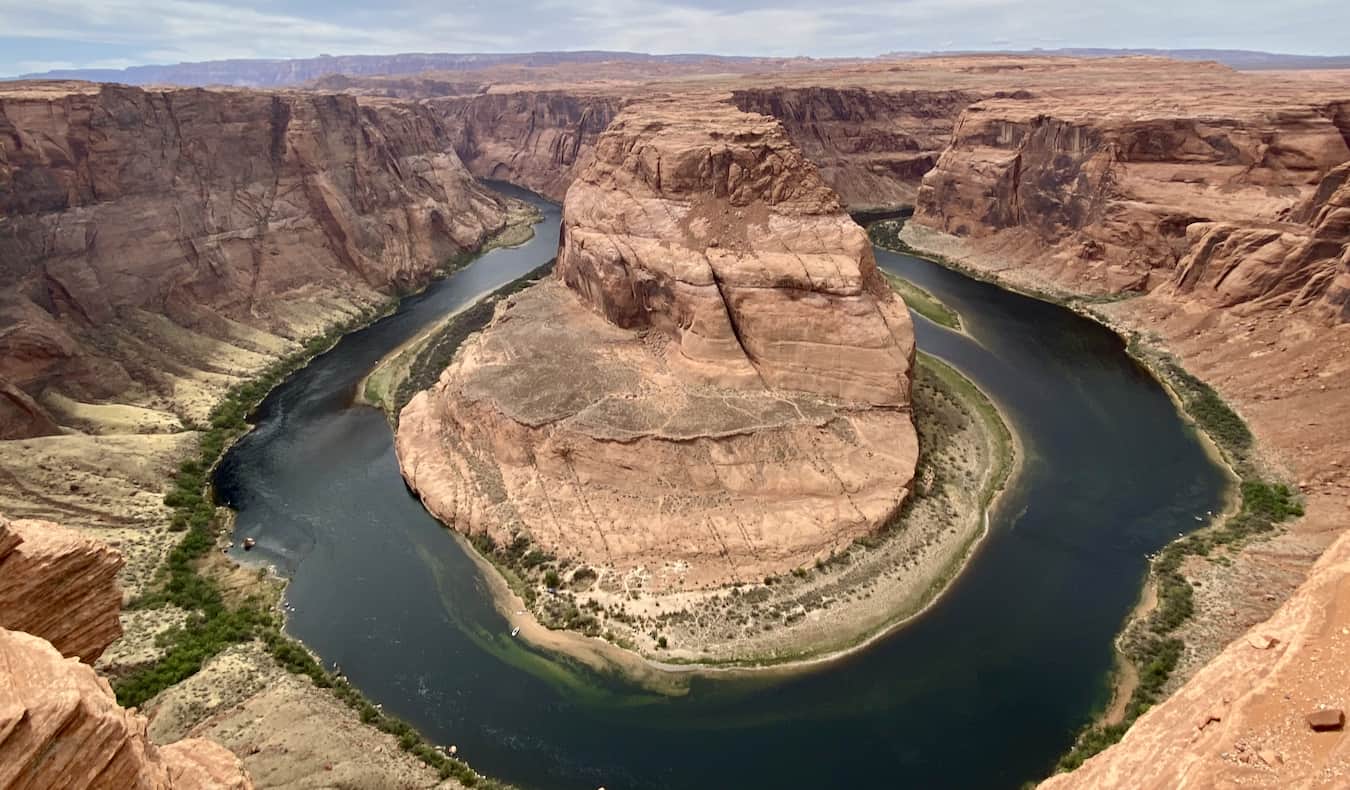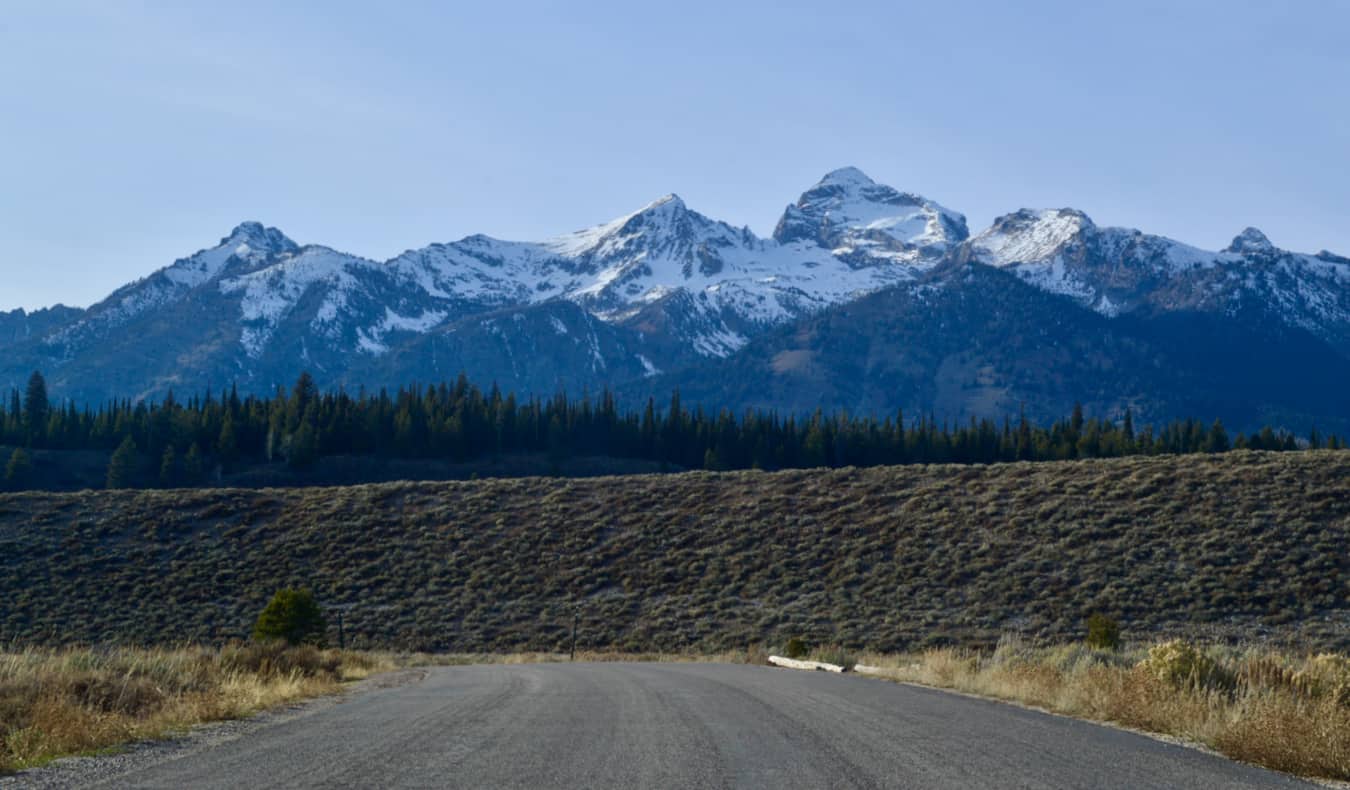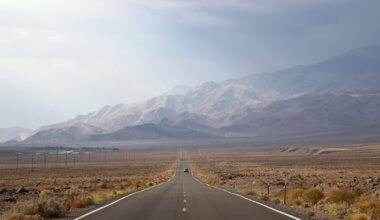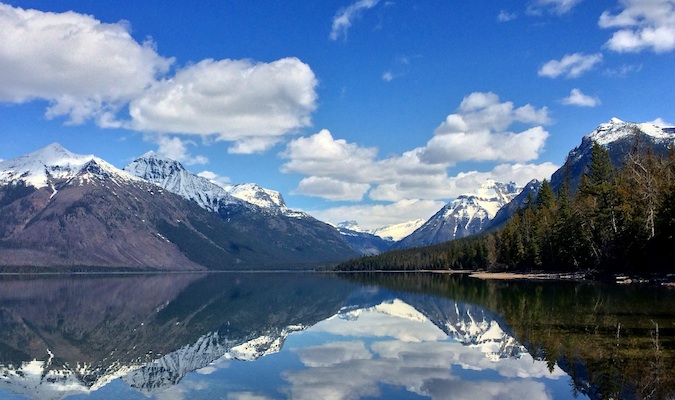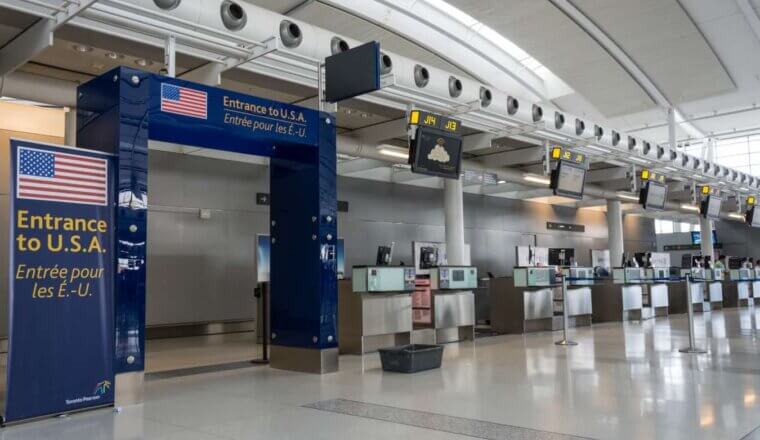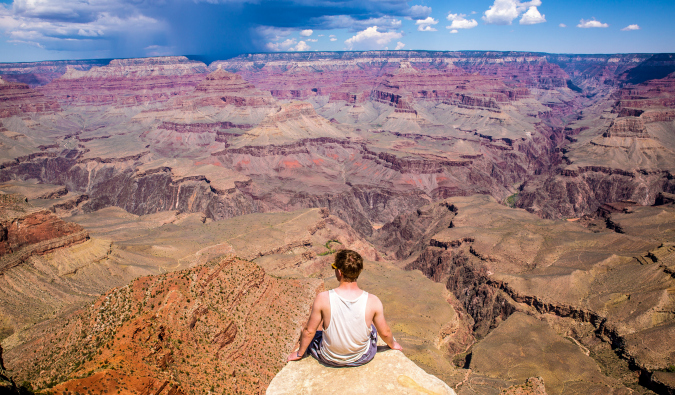
Last Updated: 3/17/23 | March 17th, 2023
The Great American Road Trip is a rite of passage in the United States. We Americans have a unique fascination with the open road. It’s built into our cultural DNA. In Jazz Age America, the car was a symbol of freedom — a chance to escape your small town and the watchful eyes of parents.
As the highway system was developed in the 1950s, a wave of kids set out on the road to explore the country, giving new life to America’s car and road trip culture. Today, many still dream of getting in a car and driving into wide open spaces for months on end.
I’ve had the privilege of taking several multi-week and multi-month road trips around the country over the years. From traveling the Deep South to criss-crossing the country coast to coast, I’ve visited almost every state, exploring the myriad nooks and crannies of Uncle Sam’s backyard.
One thing is for certain, in diversity and scale, the United States is virtually unrivaled.
But this isn’t a post about fawning over America and its landscapes (this post is). This article is about how you can travel around the US on a budget.
Because, as it turns out, this country is surprisingly easy to travel on the cheap.
While rising gas prices and rental car price gouging post-COVID put a damper on things, it’s still easier than you think to have a budget-friendly road trip adventure around the USA.
In this post, I’ll explain how much I spent on one of my trips, how much you should expect to spend, and how you can save money on your next road trip.
Table of Contents
How Much Did My Cross-Country Road Trip Cost?
In this post, we’re going to break down the costs of one of my first big road trips. I took this trip during the launch of my book How to Travel the World on $50 a Day with the intention of keeping my daily costs below $50 USD.
After 116 days traveling around the United States on this trip, I spent $6,262.67 USD, or $53.98 USD per day. While that is slightly higher than $50 USD a day, there were many parts of my budget I splurged on (see breakdown below) which skewed the number up. I definitely could have visited the country even cheaper if I didn’t have an addiction to Starbucks and sushi.
Here is how the numbers from my road trip break down:
- Accommodations: $1,036.36
- Food: $3,258.23
- Drinks: $438.94
- Gas: $696.98
- Parking: $253.00
- Starbucks: $75.26
- Miscellaneous (movies, toiletries, etc.): $170.00
- Attractions: $269.40
- Taxis: $41.00
- Bus: $17.50
- Subway: $6.00
- TOTAL: $6,262.67
Let’s break this down. First, my Starbucks addiction was unnecessary and added to my costs. Second, as a lover of sushi, trying various restaurants throughout my road trip drastically raised my food costs. Sushi, after all, is not cheap.
Moreover, I ate as if I wasn’t on a budget and rarely cooked, which is why my food expenses were so high relative to everything else. I would have definitely gone below $50 USD per day if I followed my own advice and cooked more often.
But, while I splurged in some places, three other things really helped me to keep expenses down: First, gas prices were low, averaging around $2.35 USD a gallon over the duration of my trip. (We’re going to discuss how to still do a road trip on a budget with high gas prices in the next section.)
Second, once you leave the big cities, prices for everything drop by nearly half so I spent a lot of time out of cities.
Third, I used Couchsurfing and cashed in hotel points to keep accommodation costs down. That helped a lot.
Overall, I didn’t do too bad and am happy with how much I spent. But is this how much you’ll spend, especially in the face of inflation and high gas prices? Let’s discuss that below.
How to Save Money on Your Road Trip
There are numerous ways to travel around the US and keep your cross-country road trip costs down. Whether you want to do it cheaper than I did or splurge a bit more as you travel, there are always ways to cut your expenses and focus your spending on what matters most to you.
It’s no secret travel costs a lot lately and inflation and high gas prices have really made super cheap road trips hard if you’re not staying places for free but that doesn’t mean the road trip has to be super expensive.
With that in mind, here’s how to cut your accommodation, sightseeing, food, and transportation costs — all without cutting into your experience!
How to Save on Accommodation
This will be your biggest fixed cost on your road trip, and lowering it will do the most to lower your overall expenses. Luckily, you have plenty of options:
1. Couchsurf — Couchsurfing is a service that allows you to stay with locals for free. Using this website (or similar ones) is the best way to lower accommodation costs, as you can’t get cheaper than free!
More than that, it’s a wonderful way to meet locals, get insider tips, and find off-the-beaten-track stuff to do in the area you’re visiting. While you’re generally expected to reciprocate your host’s kindness (cooking them a meal, taking them out for drinks or coffee, etc.), it’s still far cheaper than paying for a hotel or motel.
While the app has seen its community shrink in recent years, there are still plenty of hosts across the United States so you’ll rarely find problems finding someone to put you up.
Additionally, if you don’t feel comfortable staying with a stranger, you can use the app to meet people for drinks, coffee, activities, or anything else you want to do. That way, you can still meet a local and get their insider tips without having to stay with them. The app has all kinds of meet-ups and events too so be sure to check it out.
2. Airbnb — I only recommend using Airbnb in rural, out of the way places where hotels are limited. Avoid them as much as possible in other circumstances. Here is why we don’t really recommend them.
3. Budget hotels — There are a plethora of cheap roadside hotels such as Motel 6 and Super 8 that will help you stay cheap. Rooms start around $50 USD per night and are super basic and always look well worn. You’ll get a bed, bathroom, TV, tiny closet, and maybe a desk. They are nothing to write home about, but for a quiet place to sleep for a night, they do the trick.
And if you’re traveling with someone you should always say the room is for one person as these hotels charge you more for two people.
Also, make sure you sign up for Booking.com and Hotels.com loyalty programs. Hotels.com gives you a free room after 10 bookings, and Booking.com offers members 10% off bookings, as well as free upgrades and perks if you book multiple times after signing up. They definitely helped a lot.
Pro tip: Book through websites like Mr.Rebates or Rakuten. By using their links before going to Hotels.com or Booking, you’ll get 2-4% cash back in addition to the loyalty program deals.
4. Hotel points — Be sure to sign up for hotel credit cards before you go and use those points when you travel. You can get upwards of 70,000 points as a sign-up bonus, which can translate into a week’s worth of accommodations.
The points came in handy in places where I couldn’t find an Airbnb, hostel, or Couchsurfing host. This saved my butt in big cities around the country. I was glad I had accrued so many hotel points before my trip.
To learn more about, check out these posts:
- The Best Hotel Credit Cards
- The Ultimate Guide to Picking the Best Travel Credit Card
- Travel Hacking 101: A Beginner’s Guide
- The Best Travel Credit Cards
5. Hostels — There aren’t many hostels in the United States, and most of them are overpriced. A dorm room typically costs around $30 a night, which means you can obtain a similar private room on Airbnb at the same price. If you are traveling with others, it’s often more economical to get a budget hotel than a bunch of dorm beds.
However, if you are traveling solo and want to meet others, the social benefits may outweigh the lack of value. There were just some times I didn’t want to be alone – I wanted to be around other travelers.
Some of the hostels I loved are:
- Samesun Venice Beach (LA)
- South Beach Hostel (Miami)
- India House (New Orleans)
- Jazz Hostels (NYC)
- ITH Adventure Hostel (San Diego)
- The Green Tortoise (San Francisco and Seattle).
For more hostel suggestions, here’s a list of my favorite hostels in the USA.
6. Camping — Dotted around the country — including around all the national parks — are inexpensive campsites. If you have a tent and camping gear, this is by far the cheapest way to travel. Campsites cost between $10-30 USD per night, which makes seeing the country incredibly affordable. Most campsites have basic amenities like running water, bathrooms, and the ability to upgrade to get electricity.
In addition to your standard campgrounds, check out the sharing economy website Campspace. It lets you pitch a tent on private properties all around the country for a small fee. Much like Airbnb, some plots are super basic and barebones while others are more luxurious, so be sure to poke around for a cheap place to stay as there are plots available all around the country.
It’s also legal to wild camp in national forests and on BLM land unless otherwise marked.
7. Sleep in your car — I know this isn’t glamorous but sleeping in your vehicle brings your accommodation costs down to zero. I know lots of travelers who did this to make their trip more affordable, some sleeping in their car just occasionally and others doing it every night. Chances are you won’t sleep well but you will save money, and that’s a fair trade to some people!
For those traveling in an RV, there are tons of free places to park and camp all around the country. Use iOverlander to find the best spots.
How to Save on Food
While it may be tempting to eat out for every meal (there are tons of amazing restaurants all around the country), the fact is food costs really add up if you eat out every day.
To help you keep your food costs in check, here are a few quick tips:
1. Cook your own meals as often as possible – If you can bring a cooler in your vehicle, you can pack groceries instead of eating out all the time. And if you bring some containers, you can store leftovers in the car too, allowing you to cook larger meals at dinner that you can eat the next day for lunch.
2. Stay in accommodation with a kitchen – If you want to cook, you’ll need a kitchen. Prioritize accommodation like Couchsurfing, Airbnb, and hostels as those will typically provide kitchen access so you can cook your meals.
3. Shop cheap – Avoid the pricier grocery stores like Whole Foods when it comes to getting groceries and stick to budget places like Walmart. It’s not glamorous, but it will be cheap!
4. Find cheap restaurants – When you want to eat out but don’t want to break the bank, use Yelp!, ask people on websites like Couchsurfing, or inquire at the desks at hostels for suggestions. Locals have the best tips and insights when it comes to where to eat so they can point you in the right direction.
Food in the United States is very affordable and there’s not a ton of travel hacking ninja techniques to help lower costs. Simply cook, limit your eating out, and be happy!
How to Save on Sightseeing
There are a ton of things to see and do around the country, no matter what region you’re in or what interests you have. To help you save money as you take it all in, here are a few quick tips:
1. Get a National Parks pass — For $80, you can purchase an annual National Parks and Federal Lands ‘America the Beautiful’ pass that provides access to all 63 national parks (as well as any other recreation areas administered by the National Park Service). In total, you can visit more than 2,000 federal recreation sites with the same pass. At $20-35 USD per visit, seeing five during your trip makes the pass a money saver. When you visit your first park, simply buy the pass and you’re good to go. There’s no need to order it in advance.
The U.S. national park system is amazing and really highlights the diversity of landscapes in the country. You can’t travel across the country without stopping at many of the national parks, especially as you get out west.
2. City tourism cards — City tourism cards allow you to see a large number of attractions (and often include free public transportation) for one price, usually $75-100 USD. They provide free access to museums, reduced access to attractions, and restaurant discounts. Be sure to look into them if you plan on doing a lot of sightseeing, as they generally will save you money. They can be purchased at tourism information centers or online before you go.
3. Free museums and events — Inquire at tourism centers, use Google, or ask hotel or hostel staff for information about free events and museums. Many museums offer occasional free or discounted admission throughout the week. There are always tons of free activities in any city in the United States.
4. Free walking tours and city greeter programs — Many cities in the US have free walking tours or city greeter programs that pair you with a local guide who can give you a brief tour. Whenever I visit a new city, I start my trip off with one of these tours. They show you the lay of the land, introduce you to the main sights, and give you access to an expert local guide that can answer all your questions.
Check in with the local tourism office when you arrive to see what programs and tours are available.
For greeter programs, you’ll need to sign-up in advance before your visit. It’s good to give about 2 weeks’ notice as they have to find someone to take you around. Google “(city name) greeter program” to find them as some are run independently of the city tourism board so might not be listed on their website.
How to Save on Transportation
Getting from point A to B in the United States isn’t always easy, as our infrastructure isn’t that robust. (I wish we had a national rail system!) Sadly, to really see the country, a car is a must. We have few non-car options outside the major cities, and besides organized tours, it’s hard to get around the countryside and to the national parks.
Here are your options when it comes to traveling across the country:
1. Hitchhike — This isn’t something I did on my trip, as I had a car, but it’s very doable (and relatively safe). Here’s a post by my friend Matt who hitchhiked across the United States explaining how to do so and come out alive (don’t worry, it’s safer than you think)..
For more hitchhiking tips, use Hitchwiki.
2. Rideshare — Taking on riders can be a way to lower your costs. On my first trip across the U.S., I offered rides to people I met in hostels. On this trip, I had friends and readers join me along the way. You can post ads on Craigslist and Gumtree and at hostels to find riders. This not only makes the trip more enjoyable but lowers your gas costs. Or if you are a rider, you can use the same services to find rides to get you places.
3. Buy a car — If you don’t have a car or don’t want to rent one, you can buy cheap used cars from car dealers or owners on Craigslist. There are lots of listings, and you can resell the car at the end of your trip to recoup some of your initial purchase cost. While this is easy in other countries, it’s hard to do in the United States, so remember a couple of key points:
- You’ll need a US address for registration documents to get sent to. I would use a hostel or hotel address and then set up a forwarding address with the Post Office.
- You’ll have to buy car insurance, which can greatly add to the costs of your trip.
Another option is to use a car relocation service. This is when you take someone’s car and drive it across the country. You are usually paid, and gas is covered. The downside is you don’t often have a lot of leeway on timing, so you might not have much time to stop and sightsee along the way. Car relocation options are also usually limited. Two companies worth checking out are Transfercar and Hit the Road.
If you just want to rent a car, use Discover Cars.
4. Use gas apps & membership programs – Install GasBuddy, an app that finds the cheapest gas prices near you. It is a must. If you’re going on a longer road trip, sign up for the monthly program; it costs $9.99 but will save you up to 40 cents a gallon.
Also, sign up for every gas loyalty program you can, so as to maximize points and discounts. Moreover, if you get a brand’s credit card, your first 50 gallons usually come with 30 cents off per gallon.
You should also consider getting a Costco membership for cheap gas. They have around 574 stores around the US so you’ll be able to earn the cost of a membership back by saving money on both gas and food.
5. Download parking apps – Parking costs add up — especially in cities. Use apps like BestParking and Parker to find spots and compare prices.
6. Take the bus – If driving is entirely out of the question, you can find bus tickets for as little as $1 USD from Megabus. Greyhound and Flixbus also have cheap rides all around the US. Rides under five hours are usually around $20 USD if you book early, and overnight rides usually cost $50-100. You can save big if you book in advance (often upwards of 75%!).
Don’t let the United States fool you! A road trip across the United States is a fun way to see a lot of diverse landscapes, experience different cultures, and meet interesting people. Traveling America isn’t very expensive once you are outside the big cities and you can easily travel the country on a budget by using the advice in this article.
Need a car? Use the widget below to find the best deals with Discover Cars:
Book Your Trip to the USA: Logistical Tips and Tricks
Book Your Flight
Use Skyscanner to find a cheap flight. They are my favorite search engine because they search websites and airlines around the globe so you always know no stone is left unturned!
Book Your Accommodation
You can book your hostel with Hostelworld as they have the biggest inventory and best deals. If you want to stay somewhere other than a hostel, use Booking.com as they consistently return the cheapest rates for guesthouses and cheap hotels.
Don’t Forget Travel Insurance
Travel insurance will protect you against illness, injury, theft, and cancellations. It’s comprehensive protection in case anything goes wrong. I never go on a trip without it as I’ve had to use it many times in the past. My favorite companies that offer the best service and value are:
- Safety Wing (for everyone below 70)
- Insure My Trip (for those over 70)
- Medjet (for additional evacuation coverage)
Looking for the Best Companies to Save Money With?
Check out my resource page for the best companies to use when you travel. I list all the ones I use to save money when I’m on the road. They will save you money when you travel too.
Want More Information on the United States?
Be sure to visit our robust destination guide on the US for even more planning tips!
